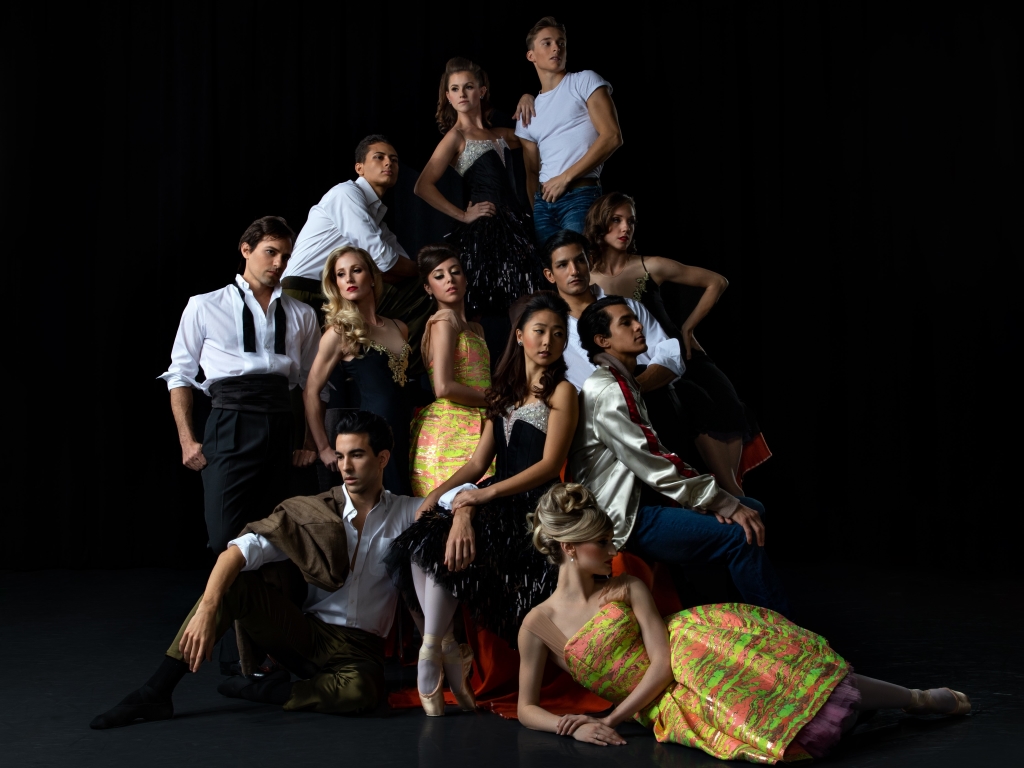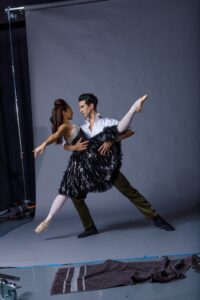Blockbuster Ballet

Writer Joseph J. Airdo // Photography by Michael Higgins



A lifelong fan of movie musicals, Ballet Arizona’s resident choreographer, Nayon Iovino, fondly recalls the overwhelming joy he felt when his mother bought him a copy of “Singin’ in the Rain” on DVD when he was a child.
“I would watch it over and over again,” says Iovino, who cites “The Artist,” “Isle of Dogs,” “Life is Beautiful,” “City of God” and “The Grand Budapest Hotel” as being among his other favorite films. “Movies catch the spirit of our imagination. They can take us to ideas beyond our reality, tell our stories and offer an escape or a mood boost. Ballet does the same thing.”
This month, Ballet Arizona will celebrate cinematic classics with its world premiere production of “Moving Movies.” Written and choreographed by Iovino, the show will transport audiences back in time to Hollywood’s Golden Age with a unique dance experience that takes ballet from the stage to the big screen.
“I dove into this opportunity with a desire to create a work that is both nostalgic and original,” Iovino says. “I took inspiration from a selection of classic movies that will hopefully connect with a wide range of audiences. Because of the diversity in my selection, I was inspired to create an original story to stitch the movies together and help them flow as a full-length ballet.”
“Moving Movies” tells the story of a famous movie studio director who is abducted by an opportunistic villain, whom Iovino says is meant to exemplify envy and the natural desire for power and success that resides within all human beings.
“I used that character to create the plot and to add some more depth to the story,” Iovino explains. “We see early on that she is eyeing the position of director and that she has a plan in mind to get it.”
However, as the ballet goes along, the villain starts to have mixed feelings about her plan — a plot development that Iovino hopes sets “Moving Movies” apart from other typical story ballets where villains are defeated by heroes or magic.



“In those traditional stories, there is only good and evil, which for me does not reflect reality,” Iovino says. “Instead, this ballet will be more relatable and will end on a theme of redemption. Even though [the director] suffers throughout the story by being kidnapped, imprisoned and forced to write movies for the villain, in the end, he forgives. Deep inside, he understands that envy is the evil to blame and we all possess it, so he decides to give her a second chance.”
Although legendary film directors such as Steven Spielberg, Wes Anderson, Federico Fellini and Charlie Chaplin provided Iovino with much of his inspiration for the protagonist, as well as the overall vibe of the ballet, he says that his biggest influences were the soundtracks of the movies themselves.
“Music composed by Hans Zimmer, John Williams, John Barry, Marc Shaiman, Justin Hurwitz, Alan Silvestri, Charlie Chaplin and others gave me the direction the ballet should go,” explains Iovino, noting that emotions and rhythms of a piece of music are almost always his sources of inspiration for his choreography. “Music is everything. It has all of the necessary ingredients to create a story because it guides us emotionally as we hear it.”
However, while both the dance and the story of “Moving Movies” began to unfold once Iovino had selected enough music, that process also became one of his biggest challenges.
“At first, I chose songs from various movies and made a playlist that had an emotional flow that I liked,” says Iovino, noting that Barry’s “You Only Live Twice” provided the initial spark.



“However, after talking with our maestro, Matthew Casper, I found out that many of the pieces I chose did not have licensable scores that we could use or required instruments that could not fit in the pit. I spent a long time looking for other pieces of music and working with Matthew until the playlist finally began to develop into something that would work well for both the dancing and the orchestra while still keeping the integrity of my vision.”
Among the music that makes up the ballet’s soundtrack are John Barry’s “James Bond Suite,” Leonard Bernstein’s “West Side Story Overture” and Nino Rota’s “Orchestral Suite” from “La Dolce Vita,” as well as iconic scores by John Williams from the “Indiana Jones” franchise and more.
The other challenge in bringing “Moving Movies” to life involved its production design — which relies heavily on advanced technology.
“For this ballet, I wanted to push the boundaries of how we could use a backdrop projection,” Iovino explains. “Instead of only creating environments for each scene, I wanted the projection to be part of the dance itself, where dancers interact with the screen as if it is part of the stage.”
For this, Ballet Arizona partnered with Arizona State University’s Media and Immersive eXperience Center and Herberger Institute for Design and the Arts’ dean Jacob Pinholster, who serves as the projection designer for “Moving Movies.”
However, at the heart of every ballet are its dancers, who use movement and pantomime to reflect the emotion of a production’s story, characters, music and design.
“The embodiment of that feeling has to be amplified through the dancer to reach everyone in the theater,” says Iovino, comparing the technique to that of a silent film, except a ballet’s actors must use their entire bodies to project their expressions.
“For me, dance has always spoken to my heart. To see a dancer moving with freedom, expressing the emotion of a piece of music is like the most beautiful poetry. I hope that combining well-known cinematic classics with ballet will create a unique and memorable experience for all those who come to watch.”
“Moving Movies”
Feb. 15–18 // See website for times // Phoenix Symphony Hall // 75 N. Second St., Phoenix // $35+ // balletaz.org

